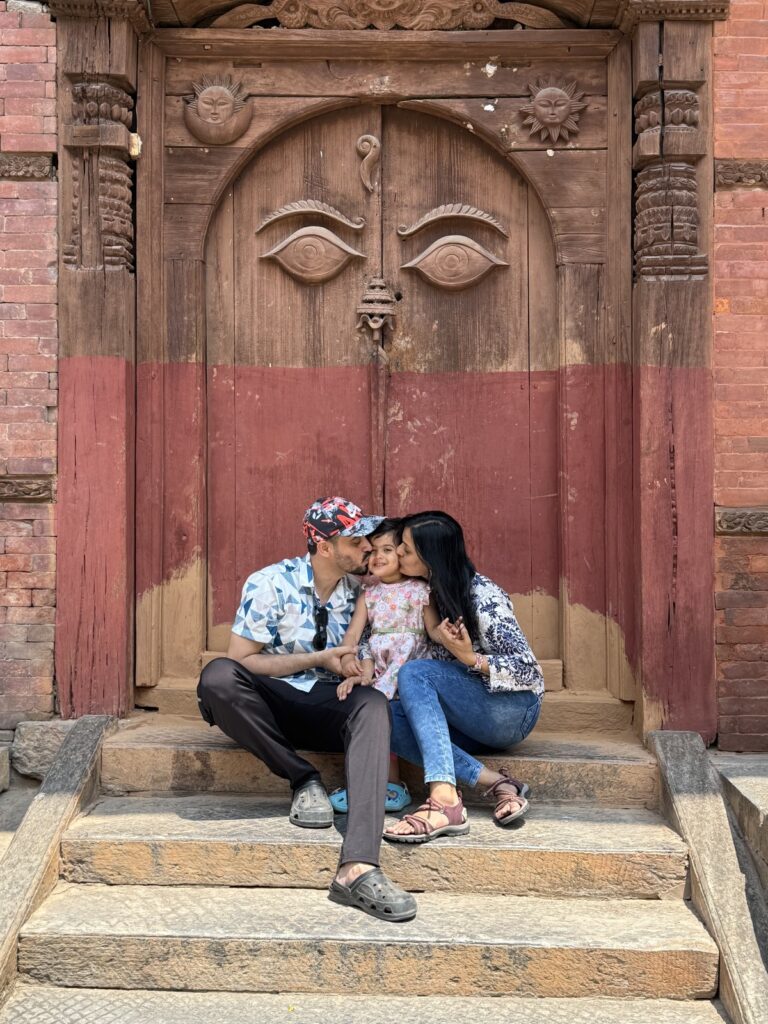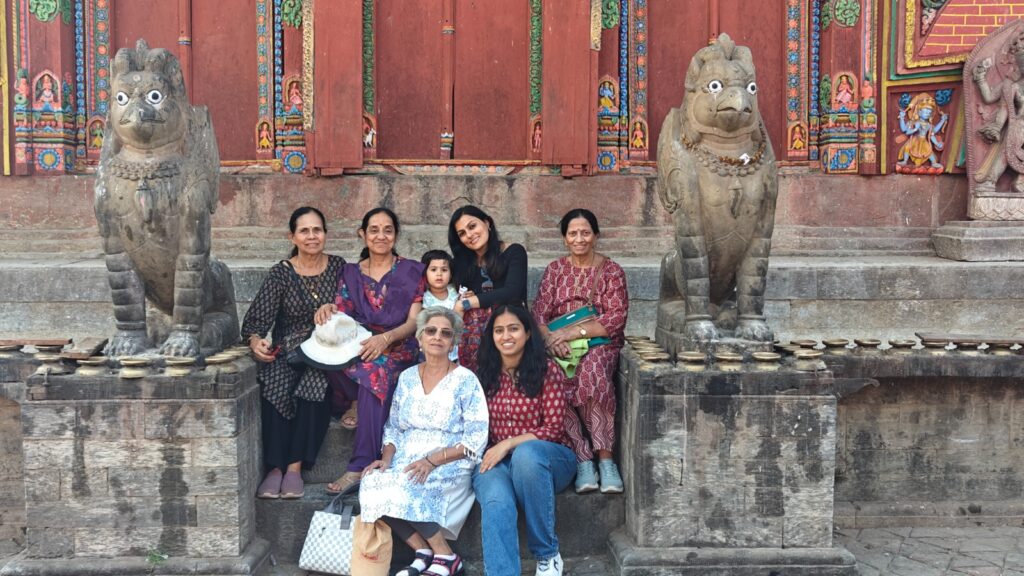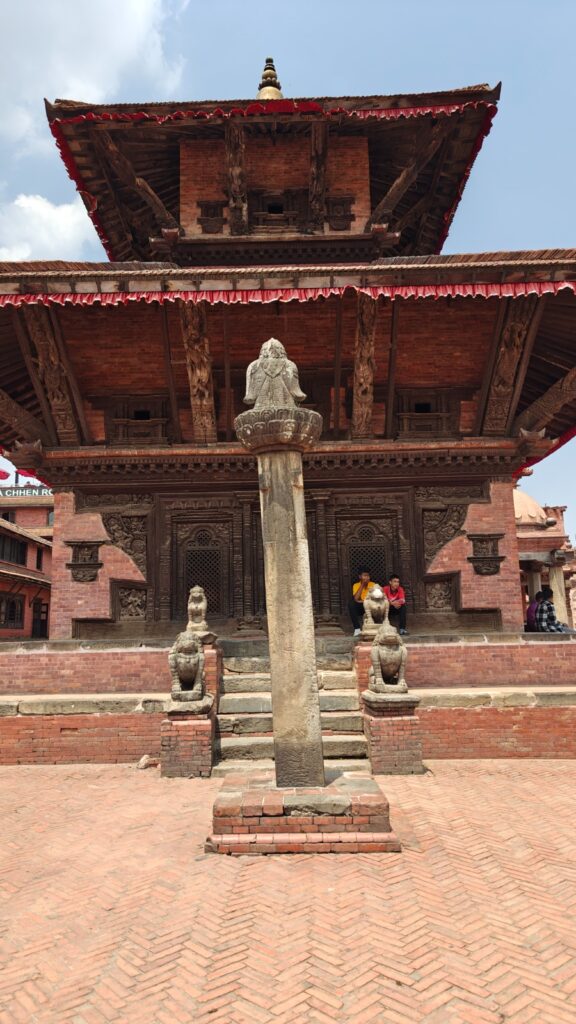Things to Do in Kathamdu
Kathmandu, Nepal’s vibrant capital, is a mesmerizing blend of ancient traditions and modern energy, nestled in the Kathmandu Valley amidst the Himalayas. Renowned for UNESCO World Heritage Sites, bustling markets, and stunning landscapes, it’s a haven for cultural, spiritual, and adventure seekers. Wondering what to do in Kathmandu? This guide details top attractions like Swayambhunath Temple, Boudhanath Stupa, and Thamel, offering a comprehensive itinerary to experience the city’s magic. This guide ensures an unforgettable journey through Kathmandu’s treasures.
1. Climb to Swayambhunath Temple (Monkey Temple)

A top choice for what to do in Kathmandu, Swayambhunath Temple, or Monkey Temple, sits atop a hill, offering breathtaking views of the Kathmandu Valley. This UNESCO World Heritage Site, dating to the 5th century, harmoniously blends Buddhist and Hindu elements. Its golden spire, adorned with the Buddha’s all-seeing eyes, is surrounded by prayer wheels and vibrant flags. Climbing the 365 stone steps, often alongside playful monkeys, leads to a serene yet lively atmosphere. Visit early morning to avoid crowds or at sunset for a magical cityscape. The entry fee is NPR 200 for foreigners, and comfortable shoes are essential for the ascent.
The temple complex is a spiritual haven, with monks chanting and incense filling the air. Spinning prayer wheels during a clockwise walk around the stupa connects visitors to Buddhist traditions. Small shrines and fluttering prayer flags add to the sacred ambiance. The panoramic views of Kathmandu, especially at dusk, are unforgettable, making Swayambhunath a must-visit. Be cautious with belongings, as monkeys can be mischievous. The site’s historical and cultural significance, coupled with its vibrant energy, makes it a cornerstone of Kathmandu’s charm, perfect for those seeking spiritual and visual delights. (
Pro Tip: Hire a guide to uncover Swayambhunath’s rich history.
2. Experience Pashupatinath Temple

Pashupatinath Temple, a highlight of what to do in Kathmandu, is one of Nepal’s holiest Hindu sites, located on the sacred Bagmati River. Dedicated to Lord Shiva as Pashupatinath, this UNESCO World Heritage Site dates to 400 B.C. The sprawling complex, with 518 temples and ashrams, features intricate carvings and gilded roofs. Non-Hindus can explore outer courtyards, observing rituals and soaking in the spiritual atmosphere. The evening Aarti ceremony at 6:30 PM, with fire and chants, is mesmerizing. The entry fee is NPR 1,000 for foreigners, and conservative dress is required to respect local customs.
Public cremations along the riverbank offer a profound glimpse into Hindu traditions, though they may be intense for some visitors. Respectful behavior, like avoiding photography during ceremonies, is crucial. The temple’s vibrant energy peaks during festivals, drawing pilgrims from across Nepal. Its ancient architecture and sacred significance make it a cultural cornerstone. Visitors can witness sadhus (holy men) and local rituals, adding depth to the experience. Pashupatinath’s blend of spirituality and history makes it an essential stop for those exploring Kathmandu’s religious heritage.
Pro Tip: Visit during Maha Shivaratri for a vibrant festival atmosphere.
3. Marvel at Boudhanath Stupa

Boudhanath Stupa, a key stop for what to do in Kathmandu, is one of the world’s largest spherical stupas and a UNESCO site. Located on Kathmandu’s eastern outskirts, this 14th-century Buddhist monument is a hub for Nepal’s Tibetan community. Its massive white dome, topped with a golden spire and the Buddha’s watchful eyes, is surrounded by 147 prayer wheels and colorful flags. Joining pilgrims in a clockwise kora offers a meditative experience. The NPR 400 entry fee grants access to this serene site, best visited in late afternoons for a peaceful ambiance.
Rooftop cafes like Roadhouse Cafe provide stunning stupa views, perfect for photography or relaxation. Nearby shops sell Tibetan artifacts, from prayer beads to thangkas. The area buzzes with monasteries and cultural activities, immersing visitors in Tibetan Buddhist traditions. The stupa’s serene energy contrasts with Kathmandu’s chaos, offering a spiritual retreat. Exploring the surrounding lanes reveals hidden gems, like small shrines and local eateries, enriching your visit. Boudhanath’s cultural and visual appeal makes it a must for travelers seeking peace and heritage.
Pro Tip: Visit the Thangka School of Paintings for intricate Buddhist art.
4. Wander Kathmandu Durbar Square

Kathmandu Durbar Square, a historic gem for what to do in Kathmandu, is a UNESCO World Heritage Site once home to Malla kings. This vibrant plaza features ancient palaces, temples, and courtyards with Newari architecture. Landmarks like Taleju Temple, Hanuman Dhoka Palace, and Kumari Bahal, home of the living goddess Kumari, captivate visitors. Despite 2015 earthquake damage, the square retains its charm. The NPR 1,000 entry fee for foreigners is worth it for the historical immersion. A guide can deepen your understanding of its cultural significance.
Basantapur Square bustles with artisans selling handicrafts and rickshaws weaving through crowds. The Kasthamandap pavilion, reportedly built from a single tree, is a highlight. Pigeons and vendors add to the lively atmosphere, offering a sensory dive into Kathmandu’s past. Exploring the square’s nooks reveals intricate wood carvings and hidden shrines. The blend of history, architecture, and local life makes this a must-visit for history enthusiasts. Visiting during festivals brings the square alive with rituals, enhancing its allure for travelers seeking Kathmandu’s cultural heart.
Pro Tip: Visit during Dasain for colorful rituals.
5. Explore Thamel’s Vibrant Streets
Thamel, Kathmandu’s tourist hub, is a lively choice for what to do in Kathmandu. Its narrow streets brim with shops selling kukri knives, prayer wheels, and colorful shawls—perfect for souvenir hunting. Bargaining is key, aiming for half the quoted price. Foodies can savor momo, dal bhat, or international cuisines like Italian pizza at local eateries. Thamel’s vibrant energy, with its mix of travelers and locals, makes it a cultural hotspot. Mornings offer a quieter vibe for exploring cafes and bookstores.
At night, Thamel transforms into an entertainment hub with live music at venues like New Orleans Cafe, ideal for meeting fellow travelers. The area’s bustling streets, occasionally navigated by motorbikes, pulse with life. From cozy cafes to vibrant bars, Thamel caters to all tastes. Its proximity to other attractions makes it a convenient base for exploring Kathmandu. Whether shopping, dining, or soaking in the atmosphere, Thamel’s infectious energy ensures a memorable experience for visitors seeking the city’s modern side.
Pro Tip: Try a thali set for authentic Nepalese flavors.
6. Visit Bhaktapur Durbar Square

Located 13 km from Kathmandu, Bhaktapur Durbar Square is a UNESCO World Heritage Site showcasing Newari culture. Preserved since the 17th century, this medieval plaza features the stunning Nyatapola Temple, a five-story pagoda, and Pottery Square, where artisans craft clay. Cobblestone streets and traditional architecture transport visitors to Nepal’s past. The NPR 1,500 entry fee for foreigners grants access to this living museum. Sampling Juju Dhau, a creamy local yogurt, adds to the cultural experience.
Bhaktapur’s charm lies in its authenticity, with locals weaving through markets and artisans at work. The square’s temples and courtyards, adorned with intricate carvings, reflect Newari craftsmanship. Exploring side alleys reveals hidden shrines and bustling local life, offering a deeper connection to Nepal’s heritage. Bhaktapur’s preserved ambiance makes it a must-visit for those seeking a step back in time. Its proximity to Kathmandu allows for an easy day trip, enriching any travel itinerary with its cultural depth.
Pro Tip: Buy unique clay souvenirs at Pottery Square.
7. Admire Patan Durbar Square

Patan Durbar Square in Lalitpur is a cultural treasure, renowned for its ancient royal palace and Newari craftsmanship. This UNESCO site houses the Patan Museum, displaying exquisite bronze statues and thangka paintings, perfect for art lovers. The Krishna Mandir, with its intricate stonework, is a highlight. The NPR 1,000 entry fee includes access to nearby gems like the Golden Temple. Patan’s compact layout makes it ideal for exploring on foot, immersing visitors in Nepal’s artistic heritage.
The square buzzes with local life, from vendors to worshippers, offering a glimpse into daily routines. Its historical significance and architectural beauty rival Kathmandu’s Durbar Square. Exploring side streets reveals traditional Newari homes and small eateries serving local dishes. The Golden Temple, a short walk away, adds Buddhist charm with its ornate interiors. Patan’s blend of art, history, and culture makes it an essential stop for those seeking a deeper understanding of Kathmandu Valley’s heritage.
Pro Tip: Join a Newari tour to taste choila and visit homes.
8. Enjoy Chandragiri Hills
Chandragiri Hills, 16 km from Kathmandu, offers breathtaking Himalayan views, including Mount Everest on clear days. The Chandragiri Cable Car (NPR 700 round-trip) provides a scenic 2.5 km ride, or you can hike for a rewarding adventure. The hilltop’s Baleshwor Mahadev Temple adds spiritual significance, drawing pilgrims and visitors. The chilly summit requires a jacket, and early mornings ensure clear skies, making it a refreshing escape from Kathmandu’s bustle.
The panoramic vistas of the Kathmandu Valley and snow-capped peaks are a highlight for nature lovers. The cable car ride offers stunning aerial views, while hiking trails immerse you in lush forests. The temple’s serene ambiance complements the natural beauty, creating a perfect blend of spirituality and scenery. Chandragiri’s accessibility and breathtaking views make it an ideal day trip for those seeking a break from the city’s chaos, offering a memorable outdoor experience.
Pro Tip: Visit at sunrise for unobstructed mountain vistas.
9. Explore Narayanhiti Palace Museum
Narayanhiti Palace Museum, once the Shah kings’ residence, offers a fascinating glimpse into Nepal’s royal history. Opened in 2008, it showcases opulent interiors, royal artifacts, and the chilling site of the 2001 royal massacre, where bullet holes remain visible. The NPR 500 entry fee for foreigners is affordable, though photography is restricted inside. The palace’s grandeur contrasts with its tragic past, making it a unique historical site. (100 words)
Visitors can explore grand halls adorned with chandeliers and stuffed tigers, reflecting royal opulence. The museum’s somber exhibits, including the massacre site, provide insight into Nepal’s transition to a republic. Audio guides offer detailed narratives, enhancing the experience. The palace’s blend of luxury and tragedy captivates history enthusiasts, offering a window into Kathmandu’s royal legacy. Its central location makes it an easy addition to any itinerary, enriching your understanding of Nepal’s past.
Pro Tip: Use the audio guide for detailed historical insights.
10. Relax at Garden of Dreams
The Garden of Dreams, a neoclassical oasis near Thamel, is a serene escape from Kathmandu’s chaos. Built in 1920, it features elegant pavilions, fountains, and lush greenery, perfect for a quiet afternoon. The NPR 400 entry fee is affordable, and Kaiser Café serves excellent coffee. Visitors can relax under pergolas or stroll through manicured gardens, enjoying a peaceful retreat in the heart of the city.
The garden’s tranquil ambiance contrasts with Kathmandu’s bustle, making it ideal for unwinding after sightseeing. Its historical charm, with restored neo-classical structures, appeals to photographers and romantics alike. Seasonal flowers, especially in spring, add vibrant colors, enhancing the experience. The Garden of Dreams is a hidden gem, offering a moment of calm amidst Kathmandu’s vibrant energy, perfect for travelers seeking relaxation and beauty.
Pro Tip: Visit in spring for blooming flowers.
11. Shop at Asan Market
Asan Market, one of Kathmandu’s oldest bazaars, is a vibrant hub at a historic trade junction. Vendors sell spices, vegetables, and handicrafts like prayer beads and brass statues, ideal for souvenir hunting. Street food, including momo and chatpate, tempts foodies with authentic flavors. The market’s sensory overload—colors, aromas, and sounds—captures local life, making it a must-visit for an immersive experience. (100 words)
Mornings are best for a lively yet manageable visit, with fewer crowds than afternoons. Haggling is expected, so negotiate for the best deals. Nearby Indra Chowk offers more shopping and the Seto Machhendranath Temple, adding cultural depth. Asan’s chaotic charm provides a true taste of Kathmandu’s daily rhythm, perfect for travelers seeking authenticity and vibrant local interactions.
Pro Tip: Explore Indra Chowk for more shopping and temples.
12. Savor Momo
Tasting momo is a delicious highlight of what to do in Kathmandu. These steamed or fried dumplings, filled with buffalo, chicken, or vegetables, are served with spicy chutney for NPR 150-300 per plate. Popular spots like Yangling in Thamel or Boudhanath eateries offer authentic flavors. Jhol momo, served in broth, provides a unique twist, delighting foodies with its rich taste.
Momo is a Nepalese staple, loved for its affordability and versatility. From street vendors to cozy restaurants, these dumplings are everywhere, reflecting Kathmandu’s culinary heart. Pairing them with local tea enhances the experience. Learning to make momo at a cooking class adds a fun, hands-on element to your trip, connecting you to Nepal’s food culture.
Pro Tip: Take a Nepal Cooking School class to learn momo-making.
13. Take an Everest Helicopter Tour
An Everest Base Camp Helicopter Tour is a thrilling adventure for what to do in Kathmandu. Offered by Buddha Air or Yeti Airlines, these 4-5 hour tours soar over the Himalayas, landing at Kala Patthar or Syangboche for stunning Everest views. Priced from USD 1,000, the experience is a bucket-list highlight, showcasing Nepal’s majestic peaks.
The aerial perspective reveals snow-capped mountains and rugged landscapes, unmatched by any ground tour. Clear weather, especially in October-December, ensures optimal visibility. Booking early is crucial, as slots fill quickly during peak seasons. This tour offers a once-in-a-lifetime chance to witness the world’s highest peak, making it a must for adventure seekers visiting Kathmandu.
Pro Tip: Reserve in advance for peak season availability.
14. Visit Kopan Monastery
Kopan Monastery, north of Kathmandu, is a tranquil Tibetan Buddhist retreat offering meditation sessions and retreats. Perched on a hilltop, it provides stunning valley views and serene gardens. The peaceful ambiance, with chanting monks and fluttering prayer flags, invites reflection. Dress modestly and check open days, as some areas close during retreats.
The monastery’s spiritual teachings attract visitors seeking calm amidst Kathmandu’s chaos. Its library and café offer spaces for contemplation and relaxation. Short meditation courses provide insight into Buddhist practices, enriching your visit. Kopan’s blend of spirituality and natural beauty makes it a unique stop for those exploring Kathmandu’s quieter side, perfect for inner peace.
Pro Tip: Join a meditation course for deeper insights.
15. Hike Shivapuri Nagarjun National Park
Shivapuri Nagarjun National Park, just north of Kathmandu, offers hiking and biking trails through lush forests. The Shivapuri Peak trail (12 km round-trip) rewards with Himalayan views and serene waterfalls. The NPR 500 entry fee grants access to over 300 bird species, ideal for nature lovers. Spring or autumn visits ensure pleasant weather and clear vistas.
The park’s trails range from easy walks to challenging hikes, catering to all levels. Its proximity to Kathmandu makes it an accessible escape, offering a break from urban chaos. Birdwatching and photography opportunities abound, with diverse flora and fauna. This natural haven complements Kathmandu’s cultural sites, providing a refreshing outdoor adventure for travelers seeking balance.
Pro Tip: Visit in spring for optimal hiking conditions.
Additional Kathmandu Experiences
Beyond major sites, Kathmandu offers diverse activities:
- Cooking Classes: Learn momo or dal bhat at Seven Women.
- Yoga: Join Hatha yoga at Pranamaya Yoga (NPR 1,000-2,000).
- Heritage Walks: Explore Itum Bahal or Ason Chowk.
- Adventure: Try climbing at Astrek Climbing Wall or rafting on Trishuli River.
- Coffee: Sip Nepal’s coffee at Himalayan Java.
Practical Tips for Kathmandu
- Best Time: October-December for clear skies.
- Getting Around: Walk in Thamel, use rickshaws, or Pathao apps.
- Dress Code: Cover shoulders/knees at temples.
- Health: Drink bottled water, carry a charger.
- Budget: NPR 5,000-10,000 daily, NPR 200-1,500 entry fees.
Why Visit Kathmandu?
Kathmandu blends chaos and serenity, offering endless possibilities for what to do in Kathmandu. From Swayambhunath to Narayanhiti Palace, every corner tells a story. Savor momo, explore Thamel, or hike Shivapuri—it’s a journey into Nepal’s soul. Plan 3-4 days, with trips to Bhaktapur or Chandragiri Hills.
How Big Sky Treks Helps
Big Sky Treks enhances what to do in Kathmandu with personalized tours led by expert guides. From Swayambhunath to Boudhanath or Thamel, they tailor itineraries to your interests. Enjoy Everest helicopter tours or Shivapuri treks with seamless logistics. Their sustainable approach ensures a meaningful, unforgettable exploration of Kathmandu’s cultural, spiritual, and natural wonders.



